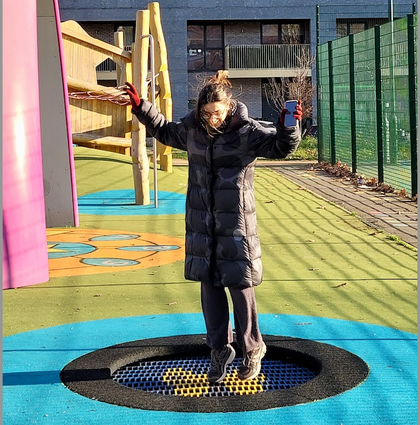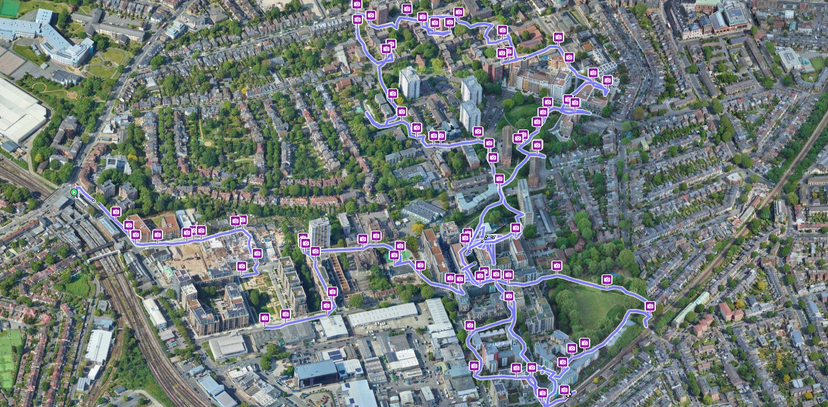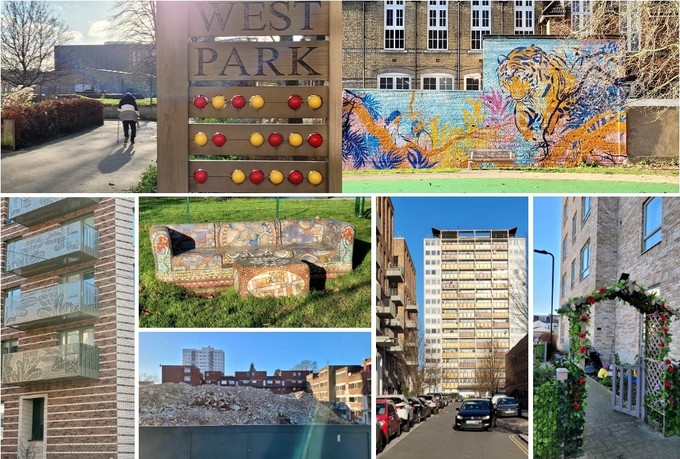

On a chilly day last week we spent a day walking round a west London regeneration scheme to explore how built environment change is affecting residents' and communities' wellbeing and their everyday lives.
We've been carrying out social impact assessments on large-scale regeneration projects across London and beyond for over ten years. As part of this we've developed and used a built environment assessment tool based on the Building for Life framework to track the social impacts of physical change. We have collaborated with practices such as Matter Architecture on these in the past. Our built enviornment assessments sit alongside research with residents and stakeholders about their experiences of change.
We have been present on the South Acton regeneration since 2015. This year we are running our fourth social impact assessment, tracking the progress of the development against our social sustainability framework.
On a sunny January in 2024 morning two of our researchers, both trained in architecture, carried out our fourth built environment assessment. In a day-long walk around the estate they mapped the changes since the last assessment in 2020. Several key phases of the regeneration have concluded, including the central plaza hosting a public park, and new social infrastructure from a nursery to a new cafe has opened. New homes on the north and north west of the estate have been developed, including a characteristic residential block incorporating patterned brick and perforated metal balconies, adding a distinctive identity to the approach from Acton Town tube.
As any area in the midst of the regeneration process we could see contrasts in close proximity. Jerome Tower, earmarked for demolition, showed signs of neglect, as did the northern part of the old South Acton estate, both in stark contrast to the new public realm which looked well used. Four public parks have been completed. Even on a freezing January morning West Park was occupied - parents and children, older people using the benches. New children's and sports facilities in Bollo Brook park were close to local schools and well overlooked by residential blocks nearby.

The new phases of the development include cafes, medical facilities, supermarkets and a community centre. The remaining part of the Acton Gardens estate in the north of the regeneration sits in limbo, caught in its current state of partial demolition, with convoluted modernist architecture and public spaces suffocated between concrete passageways, staircases and disconnected terraces. The first blocks developed through the regeneration in the south of the area, close to the South Acton Overground, were in the final stages of replacing insulation post-Grenfell.
Our experiential observations are collated against a matrix of questions and compared with previous assessments. The data provides us with a cross-reference point to situate the broader data we collect from residents, stakeholders and agencies to fully understand the impact of the regeneration.
We are in the process of updating our methodology to align with the Building for Healthy Life 2020, the National Design Guide and to incorporate more than a decade of learnings about the link between the built environment and social impacts. We are interested in how good urban design and quality buildings can contribute to resident’s perceptions about the places they inhabit.
Get in touch if you would like to find out more or work with us.
